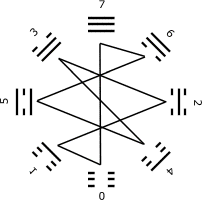
When I was recently consulted on the contents of a proposed new book about Feng Shui, I made up my mind that it was high time for me to tackle the problem of the Luo Shu magic square.
Luo Shu literally means "the design from the River Lo" and was inspired by markings on the shell of a tortoise that crawled out of the Lo. Witnessed by Yu (a hydraulic engineer and founder of the Xia dynasty) around 2205 BCE, this design has become a foundation stone of many aspects of Chinese tradition, particularly Feng Shui (most notably of the Compass School). Also, its curious connection with Classical Mediterranean culture is summarised on my Luo Shu page.
I am always inclined to search for the meaning behind mysteries and, once again, my efforts were rewarded with a new understanding and appreciation of the sages that first perceived the symbol.
Anyone who has studied the gua will be familiar with the binary interpretation of the lines (yin lines = 0, yang lines = 1), which provides the key to understanding much of the Early Heaven symbolism. I have provided an introduction to the gua's binary code elsewhere. The complex, angular glyph below is drawn by connecting the gua in the numerical sequence from the bottom upwards (that is, in this circular arrangement, from the inside outwards).

Armed with this image, we can see a resemblance to the Luo Shu glyph below. Again, this glyph is created simply by drawing a line from one number to the next.
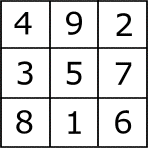
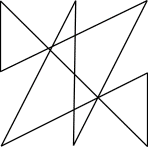
And when we make a level playing field by slightly moving the Luo Shu numbers to form a circle (without rearranging their order), the similarity becomes even more apparent.
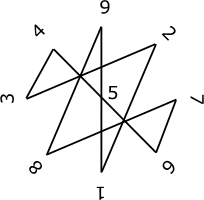
In fact, the ba gua glyph precisely maps onto the Luo Shu glyph when we perform two transformations: a flip around the vertical line of symmetry, and a rotation of 45 degrees anticlockwise.
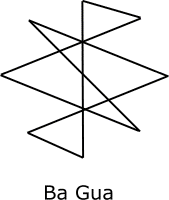
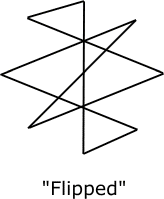
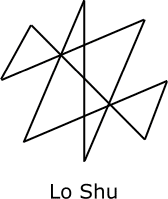
If that was all there was to it, we might speculate about the significance of a flip and rotation and, frustratingly, reach no clear conclusions perhaps. We might even feel inclined to dismiss the whole exercise as an idle curiosity. But there is more.
When we consider the direction in which the lines are physically drawn, we find the answer to a riddle that baffled me for years: with eight possible versions of the 3x3 magic square, how did the ancient sages select the one destined to become the famous Luo Shu?
We can consider this apparently lost secret, and find the dynamic key that melds the Early Heaven Ba Gua with the Luo Shu, in Luo Shu Origins - Part 2.
© Ken Taylor 2004-2006